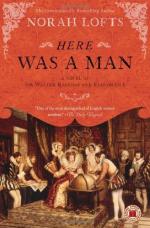|
This section contains 6,213 words (approx. 21 pages at 300 words per page) |

|
SOURCE: "The Renaissance Imagination," in Sir Walter Ralegh, Longmans, Green and Co., 1953, pp. 46-71.
In the following excerpt, Edwards explains why he considers Raleigh the embodiment of the chief characteristics of the Renaissance, primarily discussing Raleigh's interest in science and the arts and his religious beliefs.
We have grown rather shy of using the term 'Renaissance': as we know more, it becomes increasingly hard to say when it was or what it was. I use the word to define that long period of overlap between the medieval and the modern worlds: a period for which the thirteenth century is hardly too early a beginning or the eighteenth too late a close, when new values, our values, began to contest the old; a period whose commonest quality is tension, in which two ages, one dying and one being born, strive for mastery. The tension is in religion, philosophy, morals...
|
This section contains 6,213 words (approx. 21 pages at 300 words per page) |

|


